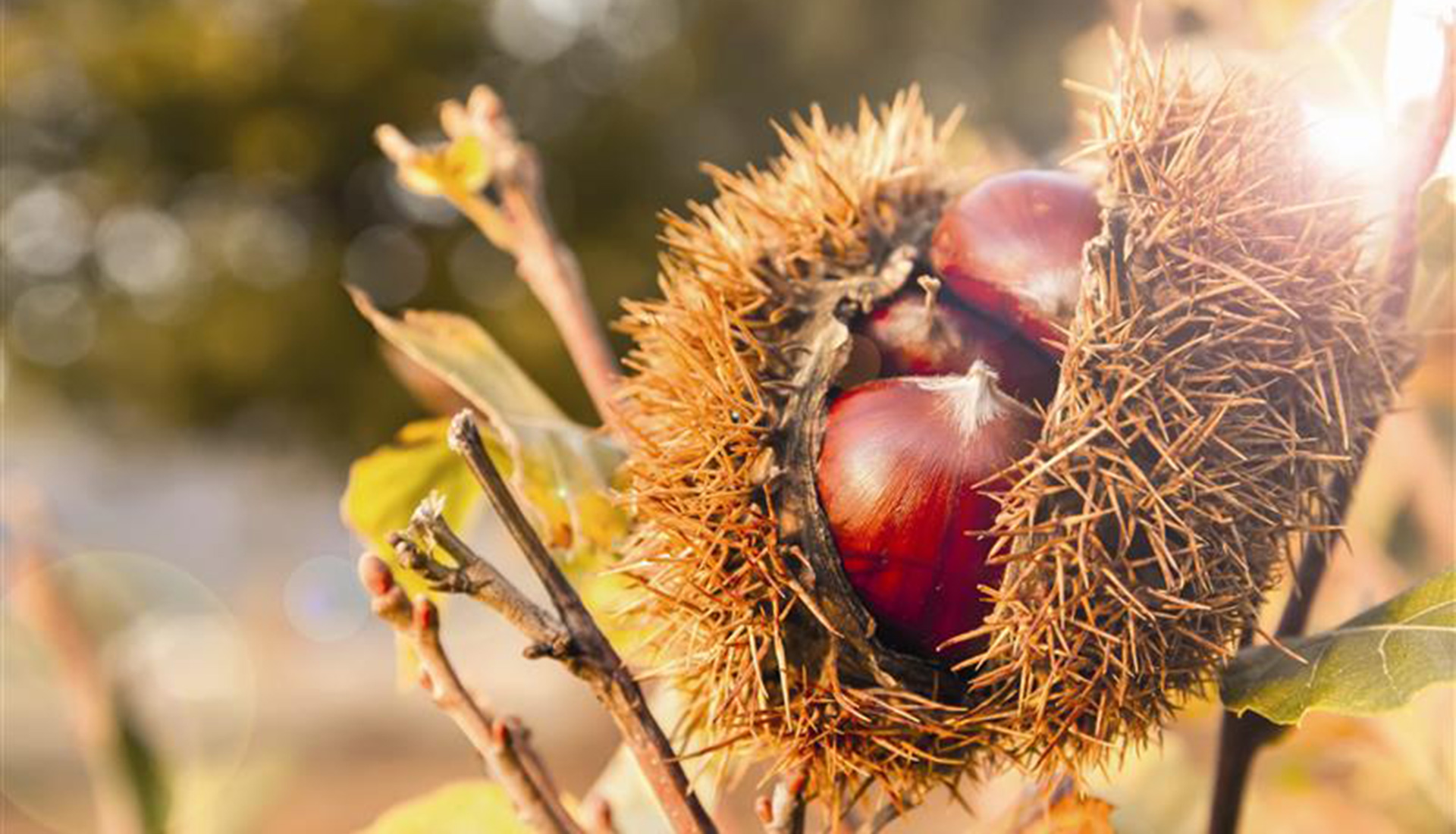Chestnut leaf rollers (Pammene fasciana, Cydia fagiglandana and Cydia splendana) are moths whose larvae develop on chestnuts and can cause significant losses in production at harvest time. The damage caused by C. fagiglandana and C. splendana can be as high as 80%.
– Pammene fasciana: early tortrix moth: emerges from mid-May to September;
– Cydia fagiglandana: intermediate tortrix moth: emerges from early July to late September;
– Cydia splendana: late tortrix moth: emerges from late August to late September, early October.
Main symptoms and damage: The larvae feed on the fruit, digging tunnels and causing unripe or ripening husks to fall.
Controlling Cydia is very difficult because:
– insecticide treatments are often impractical, ineffective or excessively costly;
– The mating disruption method is not effective because chestnut groves are often located in hilly areas with uneven terrain, making it difficult to create a homogeneous cloud.
It is therefore no exaggeration to say that chestnut leaf miners are currently difficult to control.
ECODIAN TECHNOLOGY
ECODIAN® technology is based on the use of “sexual disorientation”.
This technique uses a very low quantity of pheromones and consists of creating “false trails” that male insects follow in a vain attempt to find females. Compared to sexual confusion, disorientation involves the release of quantities of pheromones that are only slightly higher than the signals emitted by females.
ECODIAN® CT W is a thread made of compostable and biodegradable plastic material (Mater-Bi) impregnated with pheromones, for the sexual disorientation of the main chestnut leaf rollers:
- Cydia fagiglandana
- Cydia splendana
Ecodian® CT W comes in 100-metre spools of red thread with a diameter of 3 mm. It should be applied before the Cydia moths begin to fly (from late June to mid-July): we recommend using specific Traptest® ONE monitoring traps.
Field monitoring is essential for determining the population density in chestnut groves and for the correct positioning of ECODIAN CT W wires.
Under normal climatic conditions, ECODIAN ® CT W releases the pheromone for a period of 70-80 days, up to 100 days, preventing males from recognising the natural pheromone emitted by females. This prevents the two sexes from meeting and mating, thus preventing the formation of larvae and new adults.
The duration of the diffuser is influenced by climatic parameters, in particular temperature, windiness and level of exposure to sunlight.
ECODIAN CT W is secured to a bioplastic hook and attached vertically to the plant.
The height can vary depending on the height of the plants (max 6 metres).
The quantity of Ecodian ® CT W used is 600–900 m/ha, depending on the insect pressure and the layout of the chestnut grove (height, surface area and geometry). The segments should be installed as evenly as possible across the plot.
For installation in large chestnut groves, the use of a telescopic pole is recommended.
For modern cultivation systems (chestnut groves up to a maximum height of 5 metres, arranged in rows), ECODIAN CT W can be installed horizontally, securing it to the branches of the trees at a height of approximately 2.5 metres.
For optimum effectiveness, we recommend installing ECODIAN CT W alternately: one row with the product, one row without.
- Good efficacy, allowing a significant reduction in harvest damage caused by Cydie;
- Does not release persistent microplastics into the environment;
- No toxicity to humans and no residue on chestnuts;
- Suitable for use in organic farming.

